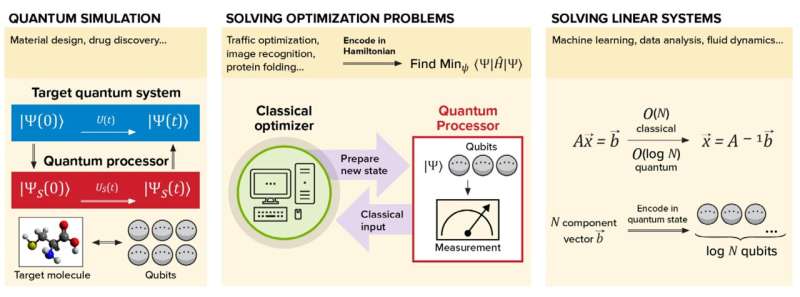Researchers release roadmap for the development of quantum information technologies

Quantum technologies are expected to become part of our everyday lives in the coming decades. Researchers in the emerging area of quantum information science (QIS) are rapidly developing many of these technologies, including ultraprecise quantum sensors that could propel fundamental science and medicine forward by leaps and bounds; powerful quantum computers to tackle insoluble problems in finance and logistics; and quantum communications to connect these machines as part of long-distance networks.
To guide the development of these devices, the Q-NEXT quantum research center has published a new report, “A Roadmap for Quantum Interconnects,” which outlines the research and scientific discoveries needed to develop the technologies for distributing quantum information on a 10- to 15-year timescale.
Q-NEXT is a U.S. Department of Energy (DOE) National Quantum Information Science Research Center led by DOE’s Argonne National Laboratory.
In QIS, researchers manipulate the quantum features of nature for practical applications such as computing. The roadmap is intended to guide the QIS community as it navigates the challenges and opportunities afforded by advances in QIS.
The roadmap specifically focuses on quantum interconnects, devices that link and distribute quantum information between systems and across distances to enable quantum computing, communications and sensing.
“The role of Q-NEXT and the other DOE National QIS Research Centers is to do the science that will be useful for the public good,” said Supratik Guha, who led the roadmap effort and who is also the Q-NEXT chief technology officer, a senior advisor to Argonne’s Physical Sciences and Engineering directorate, and a professor at the University of Chicago’s Pritzker School of Molecular Engineering. “That’s why we need a roadmap. It captures the major challenges going forward and what should be done to address them.”
The roadmap comprises three sections, focused on quantum interconnect use in quantum computing, communication and sensing. Each section identifies the science and technology imperatives needed to advance the research area over the next decade; lays out the components and systems they use; poses questions that need to be addressed by the community; and outlines the developments necessary to turn the technology to practical advantage.
“Quantum information research has been mostly about the science until recently. Now, especially over the past decade, there’s been increased interest in turning the science into technology,” Guha said. “We’ve tried to be nonprescriptive, but we do say what needs to happen to build the technologies. We’ve tried to identify areas of science that need to be advanced and describe engineering challenges that need to be tackled.”
Thirty-nine experts from 15 institutions across the national labs, academia and industry contributed to the report.
“The roadmap was an excellent way to get together scientists and engineers, industry-focused and academic-focused people, to provide all points of view and learn from each other’s perspectives,” Guha said.
“We expect this roadmap will be a guide for the global QIS community as we design and develop viable quantum technologies,” said Jennifer Dionne, who is a report co-author, one of the leaders of the Q-NEXT collaboration and a professor at Stanford University.
“The roadmap brings together the insights of experts spanning a broad range of disciplines. We hope it provides an integrated view to inform the strategies of national science agencies, academia and industry as they invest in this burgeoning field.”
More information:
David Awschalom et al, A Roadmap for Quantum Interconnects, Department of Energy (2022). DOI: 10.2172/1900586
Citation:
Researchers release roadmap for the development of quantum information technologies (2022, December 14)
retrieved 14 December 2022
from https://phys.org/news/2022-12-roadmap-quantum-technologies.html
This document is subject to copyright. Apart from any fair dealing for the purpose of private study or research, no
part may be reproduced without the written permission. The content is provided for information purposes only.
For all the latest Science News Click Here
For the latest news and updates, follow us on Google News.

